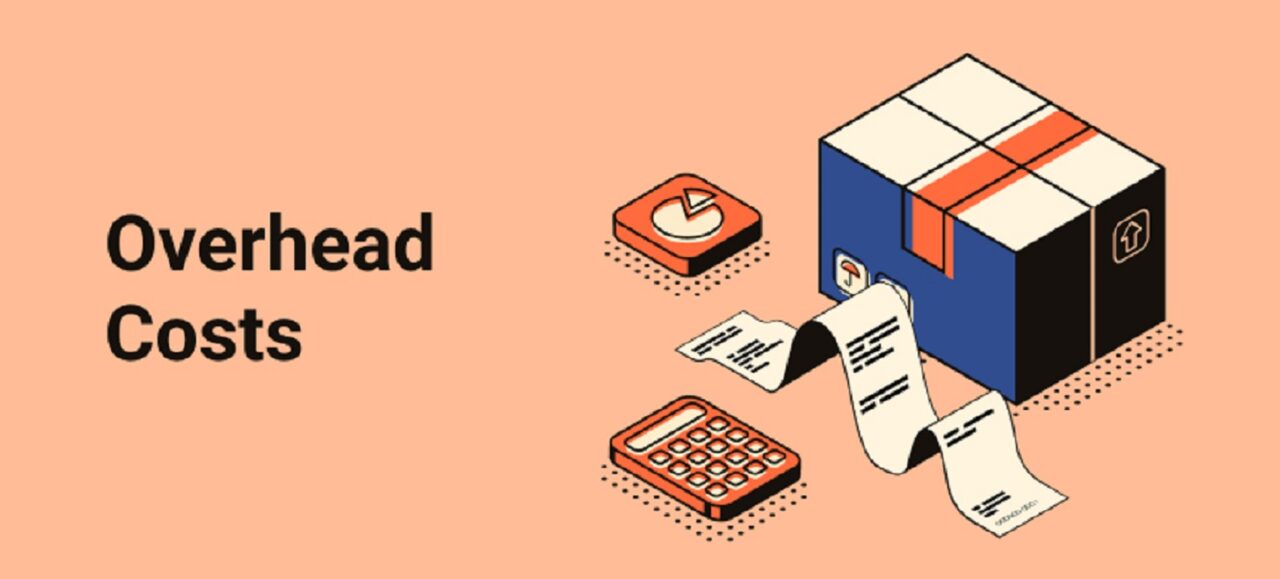1. Introduction
The ever-evolving landscape of the healthcare sector is characterized by an incessant push for innovation, especially within the medical device industry. Amidst the dawn of groundbreaking technologies such as artificial intelligence, machine learning, robotics, and the Internet of Things (IoT), the industry constantly strives to maintain its cutting edge. One critical strategy enabling organizations to stay ahead of the curve and navigate these rapid transformations is the effective utilization of freelance professionals.
The gig economy, a contemporary phenomenon that embraces temporary positions and short-term projects, has drastically transformed traditional hiring practices. Freelancers, functioning as independent contractors, offer a myriad of skills and expertise that can be leveraged to propel innovation and maintain competitive advantage. They offer the benefits of flexibility, adaptability, and a fresh perspective that often goes beyond the conventional corporate think-tanks. This article aims to provide a comprehensive guide to successfully harnessing the potential of freelancers for medical device development.
2. Understanding Your Project
The initial and perhaps the most crucial step in the hiring process is developing a thorough understanding of your project. A detailed analysis of your project needs and goals forms the bedrock of the hiring process and can significantly influence the project’s outcome.
Begin by deciphering the technical aspects of your project. For instance, if you’re developing a pacemaker, understanding the engineering and software requirements is essential. Are you following a specific design methodology? Do you need skills in a particular type of software or programming language? It’s imperative to outline these specifications to attract candidates with the right skill set.
The medical device industry is highly regulated to ensure patient safety and efficacy of the devices. Therefore, understanding the regulatory landscape surrounding your device is equally crucial. The freelancer you bring on board should have a solid grasp of these regulations, such as FDA guidelines or the European Union’s Medical Device Regulations (MDR), and the experience of working within these constraints.
Next, identify the project’s duration and timeline. This could influence the engagement model with the freelancer—whether you require their services for a quick consultation, a medium-term assignment, or a long-term project. Establishing this beforehand can help set clear expectations when you bring the freelancer onboard.
Lastly, defining the desired outcomes can provide a roadmap to your project. Whether it’s producing a functioning prototype, gaining regulatory approval, or conducting successful patient trials, having a clear vision of your end goal can help align the team’s efforts towards that objective.
The process of understanding your project needs isn’t a one-time activity. As the project evolves, there may be a need to reevaluate and adjust these requirements. This understanding not only guides the skills and experience you seek in a freelancer but also helps ensure that the professional you hire can effectively contribute to the success of your project.
3. Working With a Recruiting Agency
The reality of the contemporary business landscape dictates that talent acquisition is as strategic and critical as any other business function. The nature and quality of the talent you bring on board can significantly impact your business operations, particularly in specialized fields such as medical device development. However, identifying and securing such talent can be challenging, more so if you’re in search of niche skills or under time constraints. This is where the benefits of a specialized recruiting agency come into sharp focus.
The foremost advantage of engaging a recruiting agency is its access to a broad talent pool. By virtue of their role, these agencies maintain an extensive network of professionals from various fields, including a ready pool of freelancers who can step in and contribute to your project right from the get-go. Furthermore, these agencies have a finger on the pulse of the job market, understanding current hiring trends and the skillsets in demand, equipping them to find a perfect fit for your unique project needs.
Additionally, a recruiting agency can significantly reduce your time-to-hire. In the rapidly evolving medical device industry, where each day counts, this is a significant advantage. These agencies already have a pool of vetted candidates, which means they can help you find the right talent much faster than if you were to advertise and screen applications yourself.
However, for these benefits to translate into a successful hire, the agency you choose must be a reputable one with a deep understanding of the medical device industry. They should demonstrate an ability to understand your project requirements, navigate the technical jargon, and assess candidate suitability beyond what’s written in their resumes.
When evaluating a recruiting agency, look into their track record in the industry. Ask for references and case studies of their past placements, particularly those relevant to your project. Evaluate their client feedback and how effective their placements have been. This can give you insight into their industry expertise, professionalism, and the quality of candidates they source.
Once engaged, ensure that the agency understands your project needs and expectations. Conduct a thorough briefing about your project, its goals, timelines, and the specific role that the freelancer will play. Provide them with the project specifications and desired freelancer profile. This would help the agency tailor their search, vet candidates effectively, and ensure that only those who are a good match make it to your interview stage.
Engaging a recruiting agency isn’t just about outsourcing the hiring process. It’s about creating a partnership where the agency becomes an extension of your team, understanding your needs, and working to fulfill them. Such a partnership can take the stress out of the hiring process and contribute to a successful project outcome.
4. The Interview Process
Once you’ve identified potential candidates, either through your efforts or with the help of a recruiting agency, the next critical step is conducting interviews. While the process may seem straightforward, the interview’s structure, depth, and approach can significantly influence the decision-making process, ultimately impacting your project’s success.
An effective interview process for a freelance medical device professional should ideally revolve around three primary areas: Technical Competence, Industry and Regulatory Understanding, and Soft Skills.
Technical Competence: This forms the core of the interview. Delve deep into the candidate’s technical skills relevant to your project. For instance, if your project involves developing a new kind of biosensor, you should assess the candidate’s knowledge of biosensor technology, their understanding of different types of biosensors, their applications, and the latest advancements in the field. If specific software or tools are necessary for the project, assess their proficiency and experience using these. Asking problem-solving or situational questions can help evaluate the candidate’s technical expertise and their approach to handling project-specific challenges.
Industry and Regulatory Understanding: Given the highly regulated nature of the medical device industry, the candidate must demonstrate a sound understanding of relevant regulations. Assess their familiarity with regulatory standards like FDA guidelines, MDR, ISO standards, etc. Additionally, understanding the industry’s current trends and future directions is equally important. For instance, their views on the impact of AI in medical device development, or how patient-centric design is shaping the industry, can provide insight into their industry awareness and forward-thinking ability.
Soft Skills: While easy to overlook, soft skills are crucial for effective collaboration, especially in a project-based setup with freelancers. Assess their communication skills, problem-solving ability, adaptability, and time management. Their ability to work independently yet be a team player when necessary can significantly influence the project dynamics.
Besides these, ask about their previous projects, successes, and failures. What they learned from their experiences, how they handled challenges, and their role in the projects can tell you a lot about their working style and fit for your project.
Lastly, always leave room for the candidate to ask questions. Their questions can not only clarify their doubts but can also give you insights into their thought process, their priorities, and their level of interest in your project.
An interview isn’t just about assessing the candidate’s suitability for the project. It’s also an opportunity to sell your project and create a lasting impression on the candidate. Make sure you explain the project’s importance, what it aims to achieve, and how the candidate’s role fits into the bigger picture. This can help engage the right freelancer not just with their skillset but also with their motivation and commitment.
5. Setting Clear Expectations
Even the most qualified and skilled freelancer cannot deliver desired results if they don’t have a clear understanding of what is expected from them. Thus, once you’ve chosen the right freelancer for your medical device project, the next critical step is setting clear expectations. This involves not just explaining the task at hand but also providing a comprehensive view of the project, its goals, the freelancer’s role and responsibilities, and your expectations in terms of quality, deadlines, and communication.
Project Overview: Start with providing a detailed overview of the project. Explain what the project aims to achieve and why it is crucial. This sets the stage for the freelancer to understand the significance of their role and how it contributes to the overall project. This discussion should also cover the project timeline and crucial milestones.
Role and Responsibilities: Clearly define what the freelancer’s role will be and what responsibilities they will hold. This could include the tasks they need to perform, any people they need to coordinate with, and the results they are expected to deliver. This clarity not only helps the freelancer plan their work but also gives them a sense of ownership and responsibility, which can motivate them to perform better.
Quality and Performance Expectations: The standards for quality and performance should be defined right at the outset. Whether it’s about the quality of design, documentation, compliance with regulatory standards, or adherence to project timelines, make sure the freelancer understands these expectations.
Communication: Clear communication is the lifeblood of any project. Define how and when you will communicate with the freelancer. Decide on regular check-ins to discuss progress, address issues, and provide feedback. Discuss how you would handle any changes in the project scope or any unexpected issues that may arise.
Feedback and Evaluation: Explain how their performance will be evaluated and feedback provided. An open and regular feedback mechanism not only helps to maintain quality but also keeps the freelancer engaged and motivated.
Remember, setting expectations is not a one-time activity. As the project progresses, there may be changes in the project scope, timelines, or roles. It is important to communicate these changes to the freelancer and revise expectations accordingly.
Having clear expectations sets a positive tone for the project and provides a roadmap for the freelancer to follow. It minimizes misunderstandings, ensures better coordination, and leads to more efficient and effective work, contributing significantly to the project’s success.
6. Contractual and Logistical Aspects
Upon identifying the ideal freelancer for your project, it is crucial to cement your professional relationship with a well-structured contract and set up the necessary logistics for smooth collaboration.
Contract Formation: A contract is a legally binding document that outlines the terms and conditions of your professional relationship. It should clearly state the scope of work, deadlines, payment terms, confidentiality clauses, and any other conditions pertinent to your project. This contract will serve as a reference point for both parties throughout the collaboration. In the event of any dispute, the contract will also serve as a legally enforceable document.
Payment Terms: The contract should specify the agreed-upon payment rate, whether it’s an hourly rate, per-project fee, or another payment structure. It should also detail when and how payments will be made.
Confidentiality and IP Rights: Given the sensitive nature of medical device development, it is important to include confidentiality and intellectual property rights clauses in your contract. This will ensure that the freelancer understands their obligation to maintain confidentiality and that any work they produce as part of the project is owned by your company.
Work Setup: Depending on the nature of your project, you’ll need to set up logistics for the freelancer to work efficiently. This could involve providing access to necessary software or tools, setting up communication channels, or arranging workspaces, if necessary.
Data Security: Medical device development often involves handling sensitive data. Therefore, it’s crucial to establish strict data security measures and ensure that the freelancer adheres to them. This might include using secure communication channels, secure data storage and transfer, and compliance with any relevant data protection laws.
Regulatory Compliance: The contract should also require the freelancer to comply with all relevant regulatory standards in the medical device industry. You may need to provide them with training or resources to understand these regulations, depending on their previous experience.
Insurance: Depending on the nature of your project and the freelancer’s role, you may also need to consider professional liability insurance or similar protections.
Navigating the contractual and logistical aspects is a critical step in hiring a freelancer. It not only ensures that both parties are on the same page from the start but also lays the foundation for a successful and legally sound collaboration.
7. Maintaining a Healthy Freelancer Relationship
While freelancers may not be a part of your organization in the traditional sense, they are, nonetheless, integral to your project’s success. As such, maintaining a healthy relationship with them is not only ethical but also significantly impacts their motivation, performance, and your future collaborations. Here are a few strategies to establish and nurture a positive relationship with your freelance talent.
Mutual Respect: This is the foundation of any professional relationship. Respect their expertise, value their contribution, and treat them as part of the team. Acknowledge that they may have multiple clients and responsibilities and respect their working hours and days off.
Open Communication: Maintain regular communication to discuss project updates, clarify doubts, provide feedback, and address issues. Ensure your communication is clear, concise, and timely.
Provide Feedback: Feedback is a powerful tool for improving performance and fostering a growth mindset. Regular, constructive feedback can help the freelancer improve their work and align it better with your expectations. Remember, feedback should not be limited to pointing out flaws; acknowledging good work is equally important.
Prompt Payment: This is one of the most crucial aspects of a healthy freelancer relationship. Ensure you pay your freelancers on time, as per your agreed terms. Late payments can lead to dissatisfaction and harm your professional relationship.
Professional Development: If possible, provide opportunities for learning and development. This could be in the form of training on new tools or software, regulatory updates, industry trends, etc. This not only helps improve their performance on your project but also shows that you value their professional growth.
Future Opportunities: If you’re happy with their work, consider them for future projects. This not only helps you work with proven talent but also shows your appreciation for their work.
A positive freelancer relationship can go a long way in ensuring the success of your project. It fosters a collaborative environment, improves freelancer engagement and productivity, and increases the chances of them choosing to work with you in the future.
8. Effective Project Closure
Project closure, while often overlooked, is a vital phase in project management. It not only marks the formal end of a freelancer’s involvement in the project but also sets the tone for potential future collaborations. Here’s a step-by-step guide on how to effectively conclude a freelancer’s services on your medical device project.
Project Review: Start by reviewing the project. Analyze the freelancer’s work against the initially set expectations. Did they deliver what was expected? Were the deadlines met? How was the quality of the work? This objective assessment will help you evaluate the freelancer’s performance and provide constructive feedback.
Feedback Session: Arrange a feedback session with the freelancer. Share your assessment and discuss any areas of improvement. Remember, this should not be a one-sided conversation. Ask for the freelancer’s feedback on the project, their role, and your management style. Their insights could provide valuable lessons for future projects.
Final Payment: Ensure that the final payment is processed promptly. Any delay can send the wrong message and affect your professional relationship.
Documentation: Any crucial project documents, data, or information that the freelancer has should be handed over to you. Additionally, provide them with any documentation they might need, such as a certificate of completion or a reference letter.
Appreciation: Showing appreciation for the freelancer’s work can boost their morale and leave a positive impression. This could be a simple thank you note, a formal letter of appreciation, or a small token of gratitude.
Future Collaboration: If you’re satisfied with the freelancer’s work and see potential for future collaborations, let them know. This not only makes them feel valued but also paves the way for future engagements.
Project closure provides closure to the freelancer, a chance to reflect on the project, learn from it, and end the association on a positive note. It is the final step in ensuring a successful freelance engagement in your medical device project.



